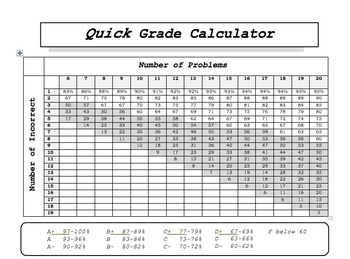
For awarding the grades, the board will put all the passed students in rank order, and the board will award the grades to the students according to the table below: GradeĮxternal topics’ theory/practical papers will be graded using numerical scores. The grades are arranged on a nine-point scale. Students will receive grades ranging from A to E under the CBSE grading system Class 10. Practice Questions from CBSE Class 10 Books Embibe offers personalised attention to all the CBSE Class 10 students to help them prepare for their exams and score good marks.
PERCENTAGES FOR GRADES PRO
Practice All CBSE Class 10 Exercise Questions with Hints & Solutions Here! Pro Tip: At Embibe, we believe that all students have the right to personalised guidance. Practice Questions from CBSE Class 12 Books

Embibe offers personalised attention to all the CBSE Class 12 students to help them prepare for their exams and score good marks. Practice All CBSE Class 12 Exercise Questions with Hints & Solutions Here! Pro Tip: At Embibe, we believe that all students have the right to personalised guidance.
PERCENTAGES FOR GRADES HOW TO
Read on to learn how to convert Cumulative Grade Point Average (CGPA) to percentage and vice-versa, as per the latest and revised CBSE guidelines. It is essential to convert the grades to percentage scores for competitive exams and fill out scholarship forms and other necessary documentation. The grading scale was implemented by the CBSE board in the academic year 2009-10, and since then, it has been continued.Īs per this five-point grading system, grade A is the highest grade while grade E is the lowest. They can take eligible elective courses and receive Credit, D, or Fail standing instead of percentage grades.CBSE Grading System 2022: The Central Board of Secondary Education (CBSE) has a grading system to provide exam scores for students in Class 10 and Class 12, which assigns grades from A to E. The Credit/D/Fail option is available to students in some direct-entry undergraduate programs of study. The policy was supported by the AMS Council and approved by UBC Vancouver Senate in March 2009. Introduce students to a broader-based curriculum.Emphasize learning and academic exploration of the new and unfamiliar.Encourage exploration of other subjects outside students' programs of study.The Credit/D/Fail (Cr/D/F) grading policy was created to: Some course materials such as live performances, live presentations, graduate-level theses, doctoral dissertations, or class participation are not eligible for review. In the online application, you will also be required to include all course materials related to your current Assigned Standing. The fee payment is part of the online application process and is a requirement for submission.

If you still believe that your assigned standing has not been correctly evaluated, you may apply for a Review of Assigned Standing (RAS): If you are not satisfied with your assigned standing, we encourage you to first discuss your standing with your course instructor, when possible. Full-year course grades are available in late April.įor Summer Session and Distance Education and Technology courses, grades are available a few weeks after the course ends. Letter Gradeįor the Winter Session, Term 1 grades are available in late December and Term 2 grades are available in late April. For a complete list of grading practices, please visit the Academic Calendar. In most faculties, individual courses are normally graded as follows.


 0 kommentar(er)
0 kommentar(er)
